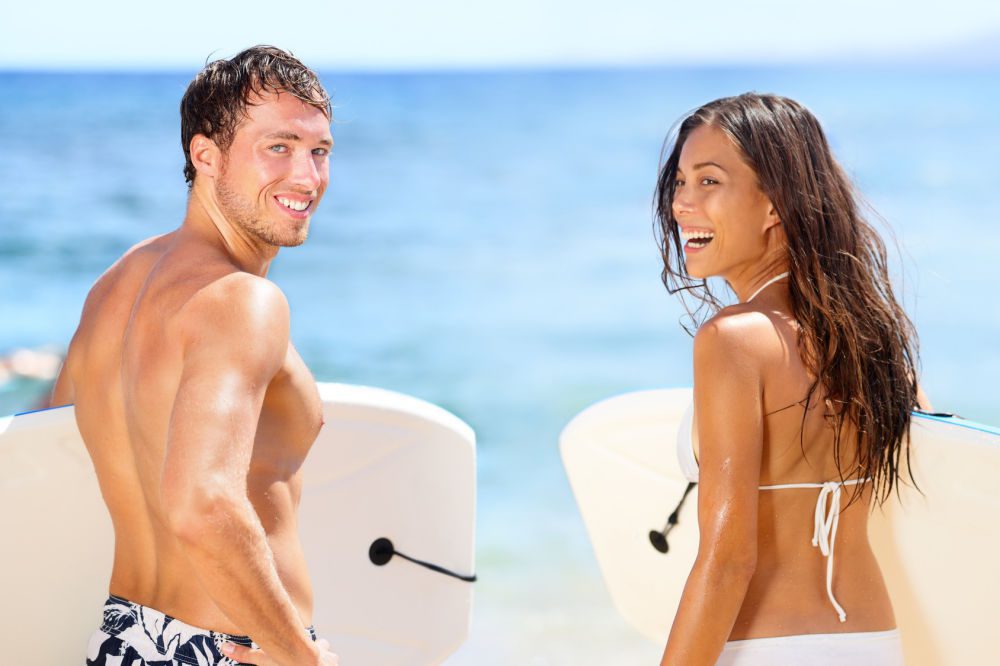
There are many ways to enjoy the waves whether you have a long surfboard or an equally popular bodyboard. One of the ways to enjoy the summer waves is by drop-knee bodyboarding.
The concept of the drop-knee bodyboarding has recently been developed and it may remind you of bodyboarding, knee boarding and surfing rolled into one. When drop-knee body boarding is properly done, the boarder will find it easier to enjoy both surfer-friendly and bodyboard-friendly waves and do tricks with ease.
If this is your first time to try drop-knee bodyboarding, do not worry with regards to its difficulty. It’s actually easy to get a hang of once you get the drift and practice regularly.
Here is a short guide on how to drop-knee bodyboard:
- When purchasing a bodyboard for drop-knee body boarding, get a larger board—around 44”—and make sure it has good buoyancy controls and comes with small fins to help in gliding around the waves
- Since you are just starting drop-knee bodyboarding, start with small to medium waves that have a wide-open section where you can ride
- When you reach full speed, grab on to the rails of your bodyboard
- Once you get a good grip on the rails, slowly move your knees to the center while your legs are in a wide stance position and keep it close to the rails
- Make sure your back foot or the fin is off the body board and your front foot is slightly close to the nose of the board
- Steady yourself as you slowly bring your upper body away from the board and make sure your weight is equally distributed on the board as you go into a drop-knee position
- Once you’ve got the balance down, release your hands from the board’s rails
- If you want to turn your board faster or pass faster around stronger waves, use the rails and turn
- Just keep your weight as steady as possible as you ride the wave and control your board or else you will fall in the middle of the wave
Aside from these basic steps, here are some additional tips that can help you get drop-knee bodyboarding down.
- Keep the nose of your board flat in the water as much as you can to ensure that you can move forward. It also ensures you won’t easily flip back to the waves
- Drop-knee bodyboarding requires speed, so keep paddling to get the right momentum needed to stabilize your bodyboard for drop-knee bodyboarding. You also have to make sure that the wave you picked is wide enough for the stunt and if you can react immediately to the changing waves
- Drop-knee bodyboarding also needs the boarder to wear the right stuff. Make sure your surfing or bodyboarding suit will allow you to move easily to match the current and not flop around as you glide. If your clothes tend to flop around as you ride, it can create a drag that can slow you down
- When moving your leg to get into position, make sure you do not move into position as if you were standing up. Swing your leg around and get into position. If you do not, the fin will pull you backward and eventually knock you off the wave
- Your knee position can also influence the stability of your ride. If your knee is placed far away from the rails, you can slide out of your board and get wiped out. If you go too close to the rails, chances are you will bog the rails. Take some time to find your perfect angle and position because it can be different per person
- Do not always sit on your calf as you get around the position and as you ride the wave. If you look at it from a distance, it looks bad. It also prevents you from maintaining the right speed or creating more speed
- When you are in position and looking down the line you want your board to move, make sure your board faces the beach rather than down the line you are looking into. Lean towards the nose of your board to get it to move to the place you want to move to.
